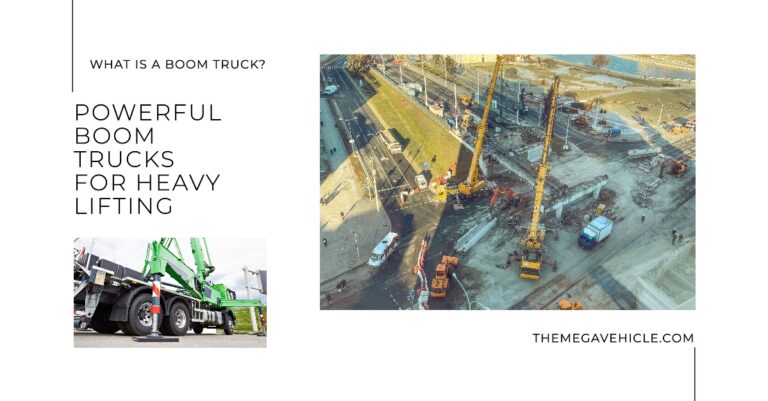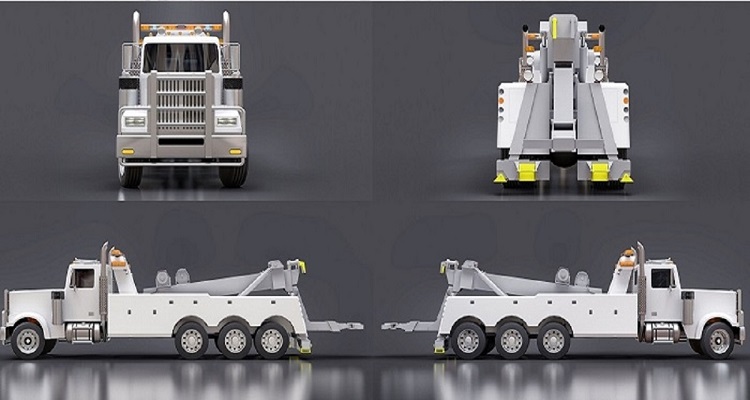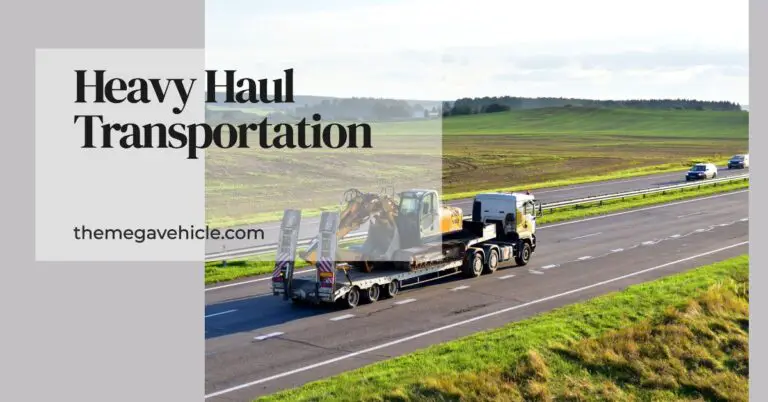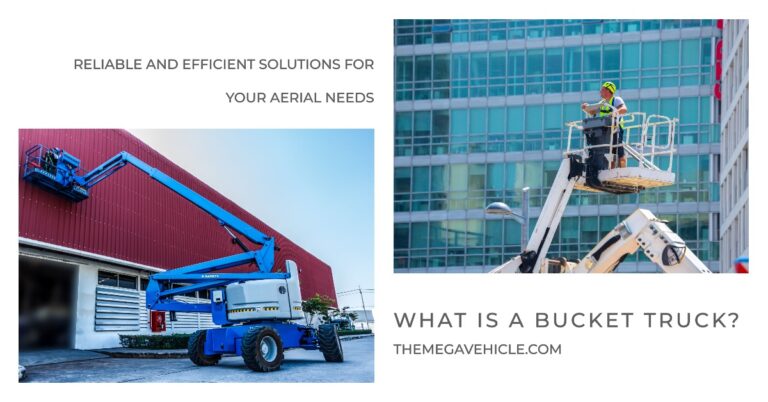What is a Dry Van Truck? | Comprehensive Guide 2023

A dry van truck is a type of semi-trailer that is fully enclosed on all sides to protect shipments from harmful elements. Dry van trucks are typically used to transport non-perishable goods, such as consumer packaged goods, furniture, electronics, machinery, and non-perishable groceries.
The term “dry van” is thought to have originated in the early 1900s, when trucks were first being used to transport goods over long distances. At the time, most trucks were open-topped, and the cargo was susceptible to damage from the elements. Dry van trucks were a major improvement, as they offered protection from rain, snow, and wind.
Today, dry van trucks are an essential part of the global supply chain. They play a vital role in transporting the goods that we all rely on every day.
Dry Van Truck Characteristics: Everything You Need to Know
Dry van trucks are one of the most common types of trucks used to transport goods. They are characterized by their enclosed structure, solid walls and roof, lack of temperature control or insulation, and availability in various sizes.
Enclosed structure
The enclosed structure of a dry van truck protects shipments from the elements and other hazards, such as dust, dirt, and debris. This is especially important for transporting delicate or valuable goods.
Solid walls and roof
The walls and roof of a dry van truck are typically made of solid materials, such as aluminum or steel. This provides additional protection for shipments and helps to keep them secure.
No temperature control or insulation
Dry van trucks do not have temperature control or insulation. This means that they are not suitable for transporting perishable goods. However, they are ideal for transporting non-perishable goods that do not require special temperature control.
Multiple sizes available
Dry van trucks are available in a variety of sizes, ranging from 28 feet to 53 feet in length. This allows shippers to choose the right size truck for their specific needs.
Other characteristics
In addition to the above characteristics, dry van trucks may also have the following features:
- Liftgates: Liftgates are platforms that are attached to the back of dry van trucks. They are used to load and unload heavy or bulky items.
- Roll-up doors: Roll-up doors are doors that roll up to the ceiling of the dry van truck. They facilitate quick and easy loading and unloading.
- Locking mechanisms: Dry van trucks are often equipped with locking mechanisms to protect shipments from theft.
Dry Van Truck vs. Box Truck: What’s the Difference?
Dry van trucks and box trucks are similar in many ways, but there are some key differences.
| Feature | Dry van truck | Box truck |
|---|---|---|
| Size | Larger | Smaller |
| Cargo area | Fully enclosed | Box-shaped |
| Temperature control | No | May or may not have temperature control |
| Typical uses | Long-haul transportation of non-perishable goods | Local deliveries and short-haul transportation |
Uses of dry van trucks
Transporting non-perishable goods
Dry van trucks are the perfect choice for hauling non-perishable items, such as:
- Consumer packaged goods (food, beverages, household items, etc.)
- Furniture
- Electronics
- Machinery and parts
- Building materials
- Home products (appliances, bedding, etc.)
- Medical supplies
- Hazardous materials
- Trade show exhibits
- Agricultural products
Safe and secure transportation of valuable items
Dry van trucks are also a good choice for transporting valuable items, such as:
- Jewelry
- Electronics
- High-end furniture
- Artwork
- Medical equipment
- Pharmaceuticals
- Other high-value goods
Efficient delivery of large quantities of goods
Dry van trucks can transport large quantities of goods efficiently. They are typically 53 feet long and have a weight capacity of up to 44,000 pounds. This makes them the ideal choice for transporting goods such as:
- Furniture
- Appliances
- Building materials
- Raw materials
- Finished products
Dry van trucks are fully enclosed and can be equipped with locking mechanisms to protect shipments from theft. They may also have additional security features, such as GPS tracking and tamper-proof seals.
How Dry Van Trucks Can Benefit Your Business
There are many benefits to using dry van trucks to transport goods, including:
Protection from the harmful elements
Dry van trucks protect cargo from the harmful elements, including rain, snow, wind, dust, and dirt. This is especially important for transporting delicate or valuable goods.
Security
Dry van trucks are fully enclosed and can be equipped with security features such as locking mechanisms, GPS tracking, and tamper-proof seals. This helps to protect cargo from theft and other security threats.
Versatility
Dry van trucks can be used to transport a wide variety of goods, including non-perishable food and beverages, furniture, electronics, machinery and parts, building materials, home products, medical supplies, hazardous materials, trade show exhibits, and agricultural products. This makes them a versatile option for businesses of all sizes.
Efficiency
Dry van trucks are large and can transport large quantities of goods. They are also typically equipped with powerful engines that allow them to travel long distances efficiently. This makes them a good choice for businesses that need to transport goods quickly and efficiently.
Affordability
Dry van trucks are relatively affordable to purchase and operate. This makes them a good option for businesses on a budget.
Overall, dry van trucks offer a number of advantages for businesses of all sizes. They are versatile, secure, efficient, and affordable.
Additional advantages
- Dry van trucks can be customized to meet the specific needs of a business. For example, they can be equipped with liftgates, roll-up doors, and temperature control systems.
- Dry van trucks are widely available, making it easy to find a carrier to transport goods.
- Dry van trucks are a relatively environmentally friendly mode of transportation. They are fuel-efficient and produce less emissions than other modes of transportation, such as air and rail.
Limitations and Challenges of Using Dry Van Truck
Dry van trucks are a versatile and efficient way to transport goods, but they also have some disadvantages that businesses should be aware of. Here are some of the most common drawbacks of using dry van trucks:
Lack of temperature control
Dry van trucks do not have temperature control, which means that they are not suitable for transporting perishable goods. This can be a limitation for businesses that need to transport food, beverages, flowers, or other temperature-sensitive items.
Susceptibility to damage
The wooden floors of dry van trucks are susceptible to damage from moisture and heavy loads. This can lead to repairs and downtime, which can cost businesses money.
Loading and unloading challenges
Dry van trucks typically have limited access points, which can make loading and unloading challenging. This can be especially time-consuming for businesses that need to load and unload large quantities of goods.
Environmental impact
Dry van trucks produce emissions that contribute to air pollution. Businesses that are committed to sustainability may want to consider using other types of trucks, such as electric trucks or trucks that use biodiesel fuel.
Security concerns
Dry van trucks are fully enclosed, which makes them a target for thieves. Businesses need to take steps to protect their cargo, such as using locking mechanisms and GPS tracking.
How to overcome the limitations and challenges of using dry van trucks
- Use refrigerated dry van trucks for perishable goods. Refrigerated dry van trucks have temperature control, which allows them to safely transport temperature-sensitive items.
- Use pallets and load bars to protect the wooden floors of dry van trucks. Pallets and load bars distribute the weight of the cargo more evenly, which can help to prevent damage to the floor.
- Use liftgates and other loading and unloading equipment to improve efficiency. Loading and unloading equipment can help to reduce the time and effort required to load and unload dry van trucks.
- Use locking mechanisms and GPS tracking to protect cargo from theft. Locking mechanisms and GPS tracking can help to deter theft and make it easier to recover stolen cargo.
- Offset the environmental impact of dry van trucks by investing in sustainable practices. For example, businesses can offset their emissions by planting trees or using renewable energy.






